Last fall Stryd announced their intention to add a subscription-based service to their offerings, in conjunction with their existing Stryd running pod. That pod provides running power (as well as acting as an ANT+ & Bluetooth Smart footpod). The pod is compatible with most watches today from Garmin to COROS to Suunto and Polar. They’ve even got an Apple Watch app, and I was also able to get it cookin’ on the Wahoo RIVAL last fall. The exact running power feature-set varies wildly though between each of those watchmakers – a fact that likely slowed Stryd’s long-term growth.
Back when they announced the subscription service, they noted that existing users would get to keep existing functionality, and that the new subscription service would largely be composed of new functionality – primarily in the structured training and race prep realms. Meaning you don’t need their subscription service to use the Stryd pod. In addition to their announcement back then, they’ve been launching various features in beta over the last 6 or so months, giving you a taste of that beverage before a price tag is attached to it.
As of today, they’ve flicked that switch and the price tag is here: $9/month
However, they’ve also lowered the cost of Stryd to $149 (from $219), *IF* you agree to a 6-month subscription (thus, another $54). So even in that scenario you’re saving yourself $16 (and you get 6-months of subscription included). You can still however buy just the pod for $219, if you’re like me and suck at forgetting to cancel memberships later on.
Further, existing Stryd owners can get a 6-month subscription for $19. And those that have been testing it since this past October can continue to do so till May 6th before they’ll have to pay. And lastly, there’s also ‘per-season’ pricing, which is akin to a 3-4 month plan up to a given race.
First though, let’s talk about what’s new, what’s changing, and then I’ll dive into some general thoughts.
What’s included:
Stryd roughly divides up their new platform into two pieces: “Data only” (free) and “All the things” (not free). They use different words for “All the things”, but essentially it means all of the training and racing features fall under the new umbrella, while all of the data from your pod (like power, pace, sped, connectivity) fall under the free umbrella.
The best way to think of it is if you just want to use the Stryd pod to gather data, perhaps transmit it to your watch/app, and look at the totals – then the existing free account will continue to do that just fine. Whereas if you want to have a running-power focused training plan, create a race-day plan based on running power, or do deeper analytics, then you’ll need a subscription. This subscription basically has the following main core features:
Training Plans: This includes both base building plans and personalized training plans based on your data.
Workout Builder: The ability to make structured workouts for running power, and then push it to supported devices (Apple Watch & certain Garmin watches only)
Workout Library & Workout Collections: If making your own one-off workouts isn’t your thing, this is a pile of pre-defined ones that you can use ad-hoc. This differs from a plan in that a plan typically is months of workouts, whereas this is just like pulling out frozen pizza from your freezer – a one-off thing ready to go without context.
Analytics bits: This includes Running Stress Balance, Race Pace Calculator, Training Distribution, Running Trends, and Workout Breakdown. It also includes personalized workout recommendations based on your data. In other words, all these things take your existing data and spit out advice or recommendations. One could bulletize all these individually, but I think a single bucket here makes sense.
Now, at this point some of you long-time Stryd users are like “Wait just a sec, wasn’t Race Pace Calculator, Running Stress Balance and a few others previously free?”. To which was my same question, and the answer is yes – it was. And it still is, at least if you had an account created prior to today with data in it. Then you’ll continue to get that for free. For everyone else, show me…err…them…the money.
Here’s an entire chart that shows all the features:
Basically, those blue ‘P’ icons mean that if you have a Stryd account prior to today (April 6th, 2021), then you get to keep those features. If you’re buying a Stryd from today onwards with a new account, then you’ll need to pay for those features.
Training Plans & Workout Builder:
By and large, the main thing the Stryd subscription is trying to do is to be a one-stop shop for power-focused run training, either on the plan side or the analytics side. While there have been scattered efforts at running power training plans by various services, most running training plans aren’t focused on running power. There are arguably many reasons for that, including lack of user uptake in running power, lack of ability to use running power plans natively on Garmin devices, accuracy concerns across multiple athletes with differing running power sensors/systems, etc…. However, at the end of the day, Stryd is basically sidestepping that entire conversation and saying “Look, if you have our device, use our platform end to end”.
So let’s take a look at the training plan system real quick. First up, I’m going to enter a fictional 10KM race on July 4th. The builder has offerings of 5K/10K/Half—Marathon/Marathon plans, plus base and intro options. I’m choosing 10KM, because frankly there’s no races scheduled anytime soon. Thus, this will work. Also, as a supposed triathlete, I balance multiple sports, so it’s not quite ideal here because I’m effectively pretending to only give it a portion of my actual workout time. So I give it the minimum it allows – 4 days, and then try and give it 5 hours. It ends up only wanting 4 hours (or 5 days + 5 hours). Here’s the workflow:
Once that’s done, it spits back a plan that shows a calendar view, and you can also see the workouts scrolling through, starting with April 12th. The problem here, as is immediately obvious, is these are frankly too silly easy. My critical power is set correctly-ish at 328w, but it spits out a long run of a mere 4-miles with 10-minute miles. Even metric-focused folks would know that’s not really viable for giving me a fast 10K race (at least, based on what I want).
So, I went back to Stryd and said ‘Yo, what’s up here?’.
The answer: It’s complicated.
Basically, right now the Stryd distance is merely an estimate. So the workout is time-based, but the distance just a swag (and by the looks of it, a really bad swag). So that 4.07-mile run is probably going to be about 5ish miles in reality, given the Critical Power (CP). Or, maybe not. It’s hard to say though. The second challenge is that the first month of every plan is basically base-building. So it’s going to be even lower volume than you’d expect. Stryd says I can slide forward my race date artificially to compensate for that. Down the road, they may have other solutions there.
This issue aside, we can tap on any given workout to see the definition of a given workout, including the narrative behind it and the exact power zone targets for each section:
If I wanted to, I could tweak any part of this – though realistically you’re not likely to want to do that within a training plan – but rather do it for one-off workouts from the workout builder or workout library.
Speaking of that workout library, there’s a pile of different categories within that, you can see them below:
Once you go into a category, there are between 2 and 8 or so workouts in each collection. I like the collection concept, and in particular, the descriptive bits below each one. The idea with all these workouts in the library is that you can just take one out when you need it, and use it.
You can save it to your calendar, or even use it as a template to tweak yourself. For example, I took the 400’s above, and tweaked it to be 8×800’s instead.
The one challenge here, and with the workout builder, is figuring out exact pacing. While the theory behind power training (across any sport) is de-coupling pace/speed. Except, it would be handy to know what it estimates the splits will be for each interval using an assumed CP and no-wind. After all, it’s calculating this already at the top of every workout showing the total workout time and distance. Time can only be calculated by knowing pace. A minor thing, but it would be handy to be able to napkin math whether or not a workout from the workout library is what you’re looking for – especially for folks not super intimate with their CP numbers and power duration curves yet.
In any event, once all that’s said and done, you can open it on an Apple Watch or Garmin Connect IQ 3.0 or above watch. You’ll see each step along the way as with most structured workout systems:
Overall, the flexibility here is pretty good if you’re purely focused on running power. Where it gets messier is if you need to use pace for something. Which, I know, doesn’t really fit into the ‘Running power is everything’ scheme, but there are legit reasons why you might want to see the HR impacts for example, of a given set of intervals at a given pace. Currently, the only way to build workouts is on power levels or perceived effort. You can’t do it at target pace. Undoubtedly, that’s more of a philosophy thing, but if RPE is an option, then pace targets should be too.
Since this isn’t a review, I’m not going to dive into every single feature here. For example, the Analytics ones require more data than is in my account today. I have good data when my Stryd battery is charged (since it just records quietly in the background on my Garmin), but when the battery dies I tend to forget about it until I randomly remember. Turns out, the last time I remembered was mid-February with a smattering of snowy runs.
Thus, those analytics are somewhat skewed as a result. But, I’ve charged it back up, so will start collecting data again.
Wrap-Up:
As a starting point for a subscription offering, I think Stryd actually has pulled together enough features to warrant a paid offering, primarily with the inclusion of the running-power focused training plans. As noted earlier, there’s not a ton of ready-made plans out there (though, there are some free ones – ironically on Stryd’s own page within TrainingPeaks). There are also training and racing with running power books too – for those that want to dig into it more themselves. But in terms of something fully integrated across multiple watch vendors, that’s fairly slim territory. So what Stryd has packaged together seems like a fair collection.
I also think that Stryd has done a relatively good job of not ripping out existing features from existing users. What folks had pre-announcement last October remains, and people that are using the subscription features in free beta can continue to do so for another month.
However, as I have often noted with Stryd over the years – the price is still going to be challenging for many people, and this subscription service somewhat follows the same trend. At $9/month, we’re in the same realm as deep training analytics platforms like TrainingPeaks (without plans), or the cost of a running power plan using Final Surge (which is free as a platform, and with far deeper analytics too). Of course, with Stryd you’re paying for the simplicity of it all in one app and one place – so there’s undoubtedly a benefit there. Still, I think $5/month is probably more in line with people’s expectations…given they still have to purchase a $150-$220 device. Just my two cents.
Ultimately, it’ll be interesting to see where things go over the next year. Stryd says that they have features in the hopper they want to release, mostly to subscribers, but also other data-driven ideas for non-subscribers. I’d also think that having some of those plans target triathletes would also make sense, because I suspect there’s an above-average number of running power users (Stryd or otherwise) in the triathlon realm, which tends to skew more towards data and tech.
With that – thanks for reading!
FOUND THIS POST USEFUL? SUPPORT THE SITE!
Hopefully, you found this post useful. The website is really a labor of love, so please consider becoming a DC RAINMAKER Supporter. This gets you an ad-free experience, and access to our (mostly) bi-monthly behind-the-scenes video series of “Shed Talkin’”.
Support DCRainMaker - Shop on Amazon
Otherwise, perhaps consider using the below link if shopping on Amazon. As an Amazon Associate, I earn from qualifying purchases. It doesn’t cost you anything extra, but your purchases help support this website a lot. It could simply be buying toilet paper, or this pizza oven we use and love.

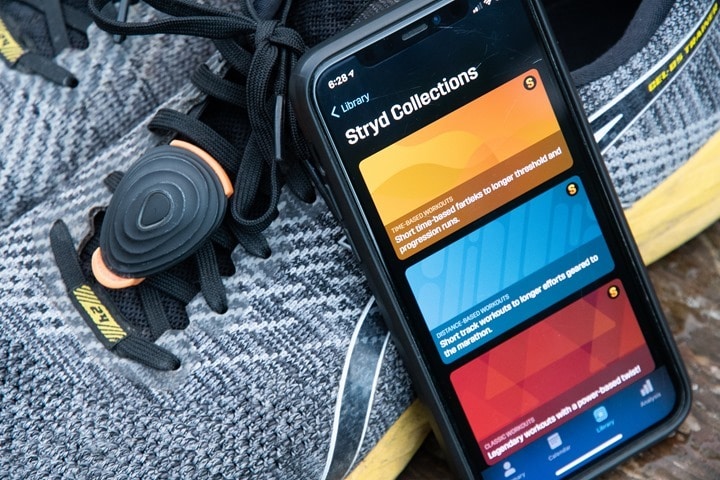

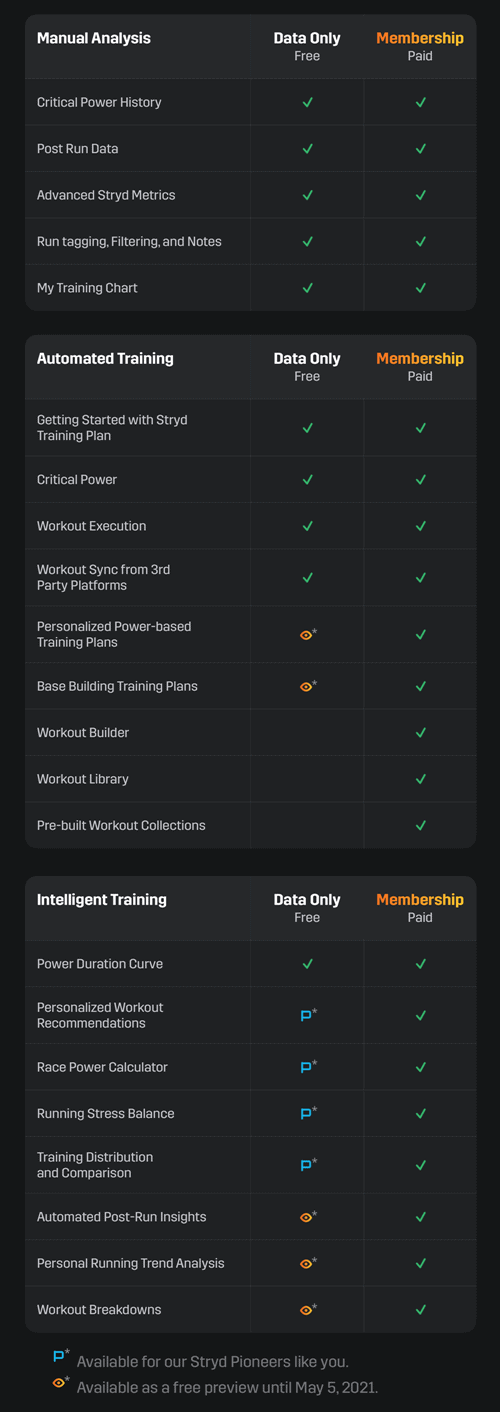

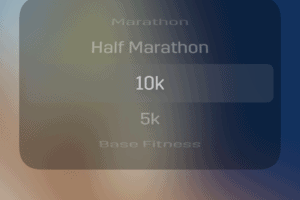




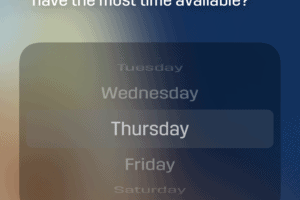
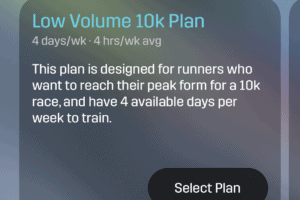
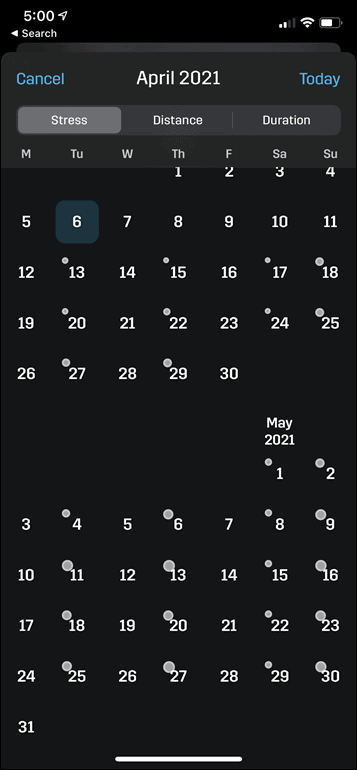

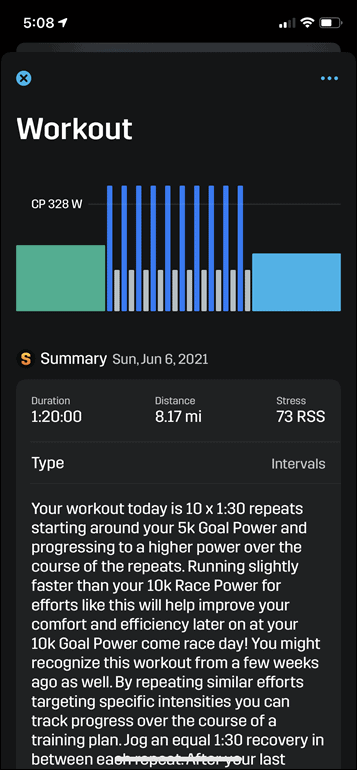
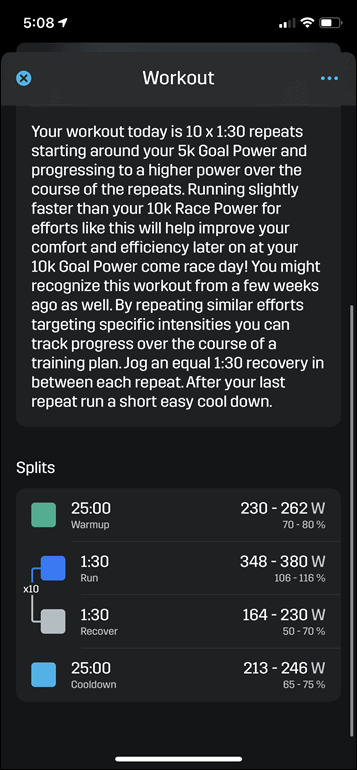

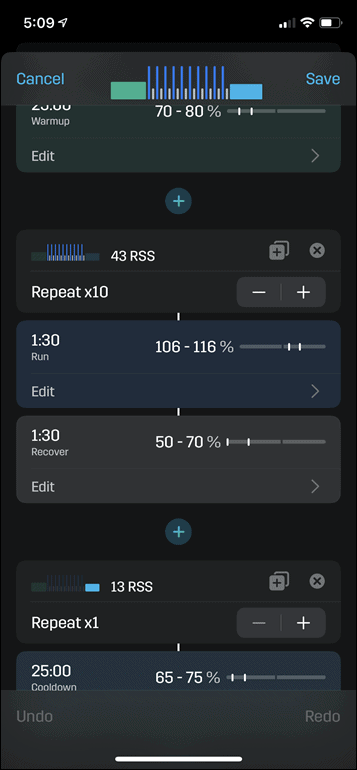
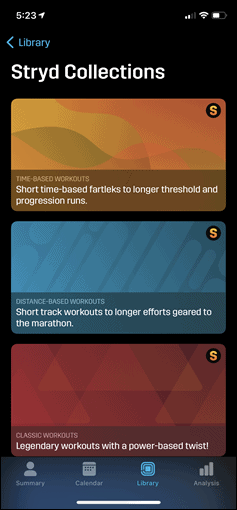
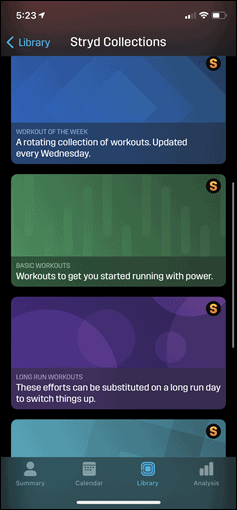
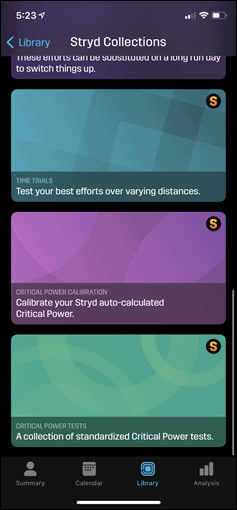
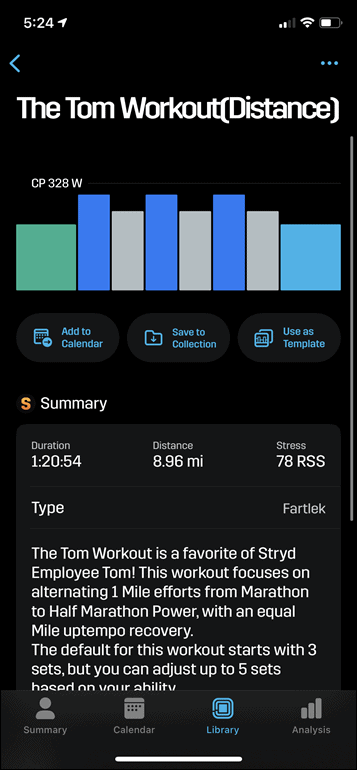
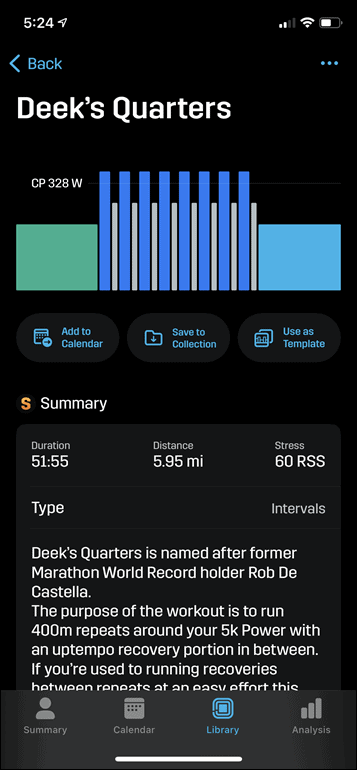
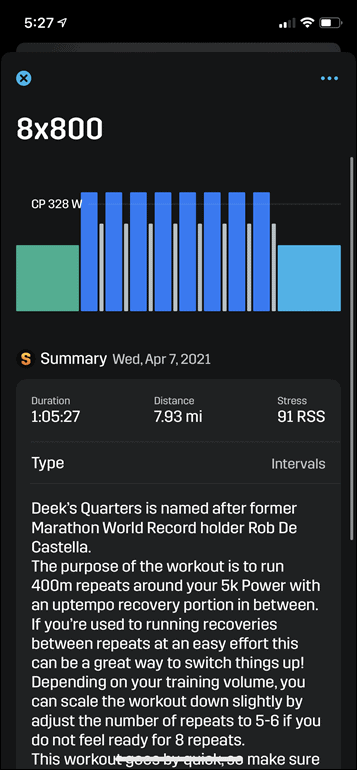
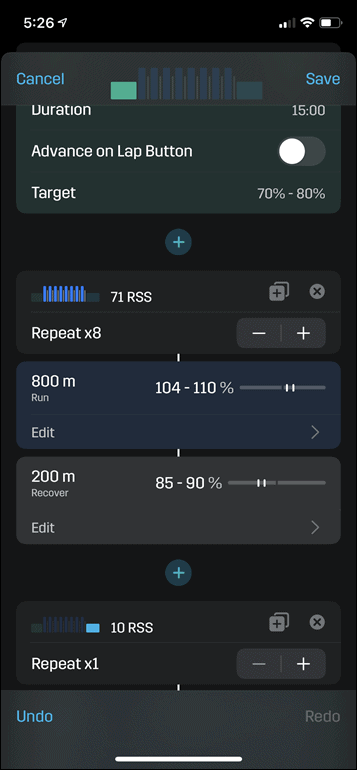
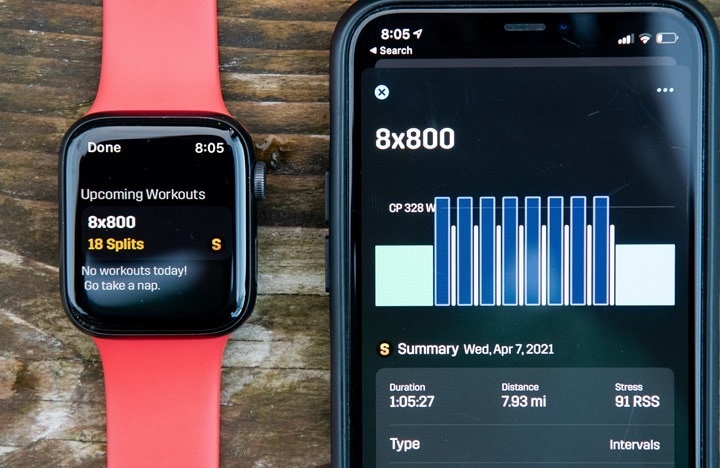
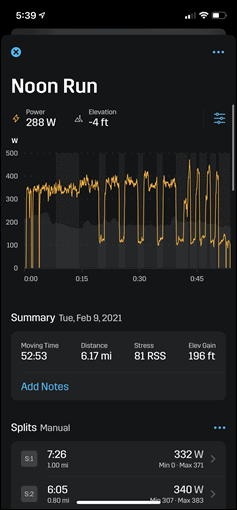
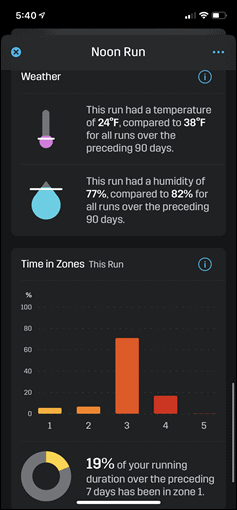
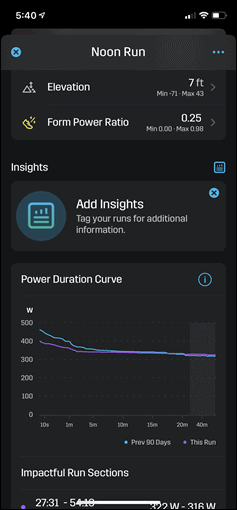
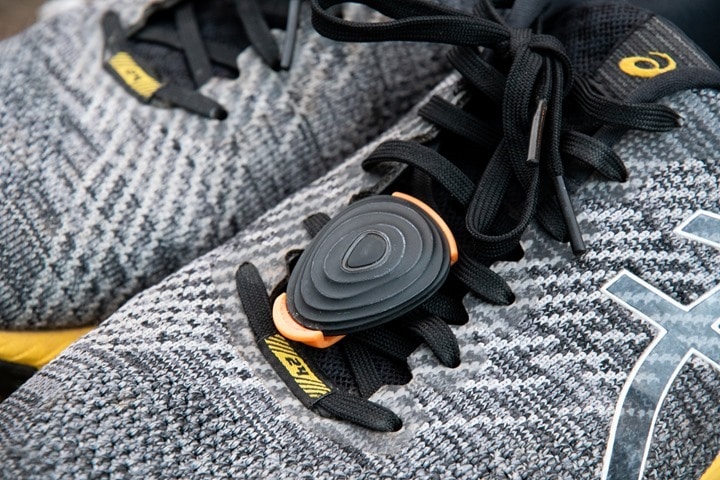
















I couldn’t find in their announcement: what happens if you don’t renew your subscription? Does it default to a data-only?
Hi Ray
I currently only use Stryd as I kind of bridge in that I have some structured run power plans in Final Surge that sync to my Stryd calendar and then I use the Stryd workout app (Connect IQ/Garmin version) to execute the workout on my watch.
From the grid they posted my guess is this will remain free as it lists workout sync from 3rd parties and executing workouts as free features. Does it sound like I’ve interpreted that right?!
Cheers
Yes.
The FinalSurge approach you outline is the way to get free workout creation, scheduling and auto sync. The TrainingPeaks alternative will require payment at TP’s end.
of course, finalsurge hope you will buy one of their plans as their business model is based on selling plans. but you don’t have to buy one to use the service.
Any word on whether or not they’ll continue to support importing structured workouts from TrainingPeaks into the Stryd app?
yes and at no charge from stryd
Even if Stryd would block that, since CIQ firmware 3.2 structured power workouts can be supported by independent developers for apps and datafields.
I have done it for my Datarun premium datafields and Datarun ultimate, but I am not the only one. Only caveat is that in order to be able to use these features one needs a triathlon or Fenix watch with topoactive active maps, as they have enough memory for datafields available.
This is with the exception of the FR745, which is supported as well, and with the exception of the Fenix 5x which does have topoactive maps but doesn’t get the 3.2 firmware
Please help me understand. Could I run a structured, power-based workout using Datarun Plus and a Stryd? Will it indicate when I leave the specified range?
Datarun ultimate doesn’t appear compatible with the FR745.
With supported Garmin watches (CIQ 3.2 firmware only) you can get structured workouts native within Garmin using a IQ datafield. (There are a few that I know of. link to youtu.be Is one example)
But, there are 2 caveats
1) CIQ 3.2 FW support
2) adequate CIQ datafield memory
You need Datarun premium with the FR745. See DR7c0, DR6c0, DR5c0 or DR4c0, depending on the number of metrics you want on a screen. Two users made youtube videos about it:
– link to youtube.com
– link to youtube.com (German language, partly about Datarun premium)
The highend watches can use Datarun premium too for powerbased structured workouts from Final surge (FR945, Fenix 5+ series, Fenix 6 pro series, Mark Descent series, Marq series etc), but can also use Datarun Ultimate. The latter has 8 to 10 metrics on a display and is geared towards the Fenix 6(x) users with a larger display and more pixels, so not everyone’s cup of tea.
Disclosure: I made those datafields
Here is a list applications that permits to create power based workouts for Stryd + a Garmin watch: link to dyrts.fr
In summary, for people who are able to create an own plan, there are free alternatives using TP, Final Surge or Garmin connect. For those who want to have a complete plan, I did not see an alternative, you need to pay for a plan.
For those who are using the flat pace instead of the power (which is in fact the power converted into a pace unit), they can use paced based training plans and just replace the usual pace by the flat pace to have a power based workout.
This reminds me of TrainerRoad. It’s a really solid single sport tool that’s trying to expand into duplicating TrainingPeaks functionality, but it can’t replace TrainingPeaks (or equivalents) because it only does one sport. I’d be really curious to know how many people buying these kinds of toys are pure runners or pure cyclists, my gut feeling is that most of us are doing at least a bit of both.
I’m glad I’m not losing the race pace calculator, that wasn’t clear in the e-mail I received. However, I’m unlikely to subscribe because I already have power based training plans and workouts in TrainingPeaks. Also, I don’t want to be confined to the Stryd Workout garmin watch app, the UI on that app really needs to be brought up to the level of the native garmin workout UI.
I’m still really pleased with the Stryd. The hardware definitely works as advertised.
Yeah, it’s a good analogy. I think the key difference is basically that TrainerRoad is roughly 3 years ahead (feature-wise) of Stryd when it comes to what TR is doing and when they started down this path. Obviously, lots of differences between the platforms, but in terms of when TR said “Yo, we’re going all-in on training plans, and a training analysis platform”, that was three years ago, even if people didn’t know it then.
Here’s the start of that journey, May 2018: link to dcrainmaker.com
Love my Stryd still annoyed of being forced to have ANOTHER monthly fee offered, i’m afraid. Would rather have spent 75.- more on the device itself, having all of its features included.
You’re not really being forced. Your Stryd will have a lot functionality without it.
Have you heard anything new about native running support from Garmin?
The Stryd workout app is cool, but makes it impossible to use CIQ datafield or additional sensors.. would be so much nicer to use my Stryd and have garmin finally acknowledge it truthfully for training :(
Nothing new there, other than to note that XC Ski Power does support native power targets…
link to youtu.be
You can check out the above video. It’s a 3rd party IQ App that reads BN structured training power workout and plays it ok your watch.
So you get to use whatever native garmin datafields/screens w/o using stryd workout app.
Just create your workouts in final surge, import into Garmin Connect, sync to the watch and then “do workout”
At some point maybe a few months ago, you intimated in a comment maybe the winds are changing with regards to that. Still feel like that’s the case?
Personally, I feel like they absolutely need to do it. They’re implementation is so clunky even compared to Coros, it’s almost laughable. I’m sure there is some hardware implementation they’re waiting for to launch it (versus something like track mode which they were able to replicate quickly and software only).
To me, the GC inclusion of XC power is the laying of that groundwork. I see no other reason to do all that GCM workout builder work…for the 12 people using XC ski power during one season of the year.
At $99/year, this:
“The second challenge is that the first month of every plan is basically base-building. So it’s going to be even lower volume than you’d expect. Stryd says I can slide forward my race date artificially to compensate that. Down the road they may have other solutions there.”
shouldn’t be acceptable.
Also, why aren’t training plans tailored to each Stryd user? PowerCenter has my activity history, my PDC, it knows if I previously followed a training plan when I hit my power targets or not. Surely with all this information some automatic tweaking could be done to its prebuilt plans to adapt them to each runner.
Regarding membership fees – it’s all down to perspective.
If you’re a cyclist, especially Time Trialist, then when I add up the cost of my bike(s), power meter, Zwift etc, then Stryd and its membership looks very fair value.
If you’re “just” a runner, then it’s quite different. A runner can by £50 trainers, a £100 watch, at a basic level. Stryd then becomes a big purchase. But I see quite a few new runners with Fenix 6, £100 jackets etc, so maybe Stryd does know what it’s doing after all :)
If you want to run with power I see no competition as complete as Stryd right now.
Please disclose your affiliation with Stryd. you seem to a lot of ‘advertising and pumping them up”
I have no affiliation. Just been using it for 3 yrs now, so know the product quite well.
“advertising and pumping them up” – I try to keep my posts factual. Happy to answer an tech questions you might have….
I’ve even suggested below that someone doesn’t buy Stryd buy buys a NPE RUNN instead :)
Can’t see why Stryd can’t get the distance right in their plans. Our Trenara app is way smaller regarding users or brand awareness, but our paces (read ‘power’) are correctly translated in time or distance. We must be doing something right 😀
We’re also looking at a multisport analysis, where your running plans will be adapted regarding your bike or swim sessions (or skate or cross-country skiing, …). In phase 1, we’ll gather the data, in phase 2, we’ll translate the data into adapted running plans. Phase 1 will be launched in Q2, algorithm is ready(-ish).
Christophe,
Correct, your plans do seem better suited to the individual runner compared to those of Stryd. I have looked at their 10k plans more than once but these do not seem to get me anywhere close to my goals (distance wise). I know where I’ll keep my subscription 😊 . Their analysis features are great though.
Clever commenting on the post. I’ve just downloaded your app to take a look.
The issue I see with your app is that I don’t have a “goal” currently, and it’s a mandatory field for me to use the app.
Given a duration,and a power target, distance will vary depending on hills, terrón, wind force and direction, RE… But the training is done all the same! If you run by power, you just need time and power targets. It is a paradigm change
Do they support “Wind” as a datafield for garmin, or is it more like a behind the scenes for power calculation?
It’s a behind the scenes metric, so the total power displayed on the watch now considers the power to overcome air resistance.
Hi Ray. Do you know if they have any intention of exporting planned workouts to Coros devices? I’m not a geek but their servers are already connected for transmitting completed workouts.
Stryd have today answered the same question on their FB page. Their reply was:
“We are always looking to expand compatibility but there are no immediate plans for more watch platform support.”
Bummer. I’ve gotta wonder if there was some bad blood between the two of them after COROS’s launch of their wrist-based power without telling Stryd ahead of time (I mean, I don’t see why you would, but they didn’t seem pleased about it).
Yeah I remember “that” moment too when Coros power = Stryd power (kind of).
It initially pulled the rug from under Stryd’s feet. But now over time it’s clear that Coros power isn’t quite as responsive as Stryd power and the eco system whilst offering power workouts doesn’t go nearly as far as Stryd’s does. But still very awkward. The Pace 2 really shook up the market – great for consumers!
I use TrainerRoad and Stryd, unfortunately the training plans of both are not usable for me because I train duathlon, bought a Master Duathlon plan through TrainingPeaks link to myprocoach.net
to find the right balance.
The import of the bike trainings to Trainerroad or Garmin works great, but the running trainings for Stryd are not useful because on the one hand Stryd calculates my Auto CP too high (30 watts), on the other hand the structured running workouts are tailored to pace.
You could switch the workout on TrainingPeaks from pace to power and send it to Stryd, but for me it is enough that the pace on Forerunner 945 is correct while running with the Stryd Pod, as my Forerunner 945 fluctuates too much without Stryd.
So i think, this new Stryd feature isn’t useable for me!
Regarding the Auto CP, that sounds like your test protocol could be improved. Usually if it’s too high, then you lack a max 2-5min effort within your power duration curve.
But yes, if you’re training by pace and want to consider multi sport then TrainerRoad or TrainingPeaks are better options for now.
sure, but i have different problems, last year i lost 12kg body weight and Stryd seems have a problem with bigger weight loss and of course with a decrease of 12kg i am a little bit faster now, the other thing, my Sprint training is to fast, so i get very good values there :-)
The single most counter intuitive aspect of Stryd is to never change your Stryd weight regardless of your physical weight. Stryd natively works in W/kg, so there are little to no benefit in updating user weight. On the Stryd FB page in the Files section there’s a document called “what is a Stryd power meter?”. In that it explains why.
*Sigh* now we know which Will it is – from the FaceBook group. This W/Kg nonsense again.
Why do you call it nonsense. It’s physics. An accelerometer based power meter is very different to a strain gauge based power meter.
If you don’t understand it, ask questions…..
Dave – he’s a post from Steve Palladino regarding weight setting in Stryd:
link to docs.google.com
@Will: thanks, good to know this from Steve Palladino, from now on i will have the same weight on Stryd and hopefully every day on my Garmin Index Scale :D
Since Stryd works with W/kg and takes it times your weight, best practice is to set your weight to 100kg, and never change it again. That way Stryd displays W/kg*100 which is a meaningful number, and not the arbitrary one that you get when you let Stryd multiply W/kg times your weight. Of course it would be even better to set weight to 1kg to effectively get W/kg but Stryd only supports integers, hence the need for 100kg.
I’ve read the piece a few times, and mostly, my head hurts.
The problem with this approach is that while W/KG is a great way to *compare* data amongst runners, or set goals as a coach, it’s not what actual apps use to record and transfer data. They use watts, recorded as watts, for power data.
So when I crack open XYZ 3rd party app, it’s not looking at a W/KG metric recorded by Stryd. Rather, it’s looking at a watts metric recorded by Stryd.
Nevermind the fact that that the article points out that other metrics like leg spring stiffness will be inaccurate.
Maybe I’m dense, but I don’t…oh, nevermind, I was going to try and make a point here, but realistically, every time I re-read the article my head hurts even more, and it’s just delaying me getting out for my track workout. I’d love to see someone actually from Stryd weigh-in on that article, because it just doesn’t align with so much of power training, or what Stryd themselves says:
“You might get unexpected power readings if your weight and height are set incorrectly. Weight affects how many metrics, such as power and your Run Stress Score are calculated.”
*https://support.stryd.com/hc/en-us/articles/360001177014-Weight-and-Height-Setting
i use TrainingPeaks and WKO5 too, where my daily weight will synced, they support Running Power with Stryd, especiall WKO5 and mostly they see changes in my modelled running FTP before Powercenter of Stryd.
So, when WKO works with my real weight (~66kg) and Stryd with 100kg, hmmmmm, so i have bigger differences?
So i think, it’s better to set Stryd in the near of my real weight, or?
DCR, you’re in good company. It goes against everything that feels natural and is a clear departure from cycling power meters. I wrote this explanation for the Stryd FB forum. Maybe it helps, maybe not.
What is a Stryd power meter, how is it different to a bike power meter
and why is it recommended not to change your user weight?
The Stryd pod is predominantly an accelerometer and barometer. There
are other sensors inside it too, but for the purpose of this explanation it’s
reasonable to simplify it. With these sensors it can accurately measure
speed and height change. From laboratory testing Stryd have estimated
the metabolic cost of running at various speeds and gradient changes. It
uses its proprietary algorithm to calculate this metabolic cost as
Watts/kilogram, or the rate of burning energy for a given mass. However,
for decades within the cycling community power is simply shown as the
unit of Watts. GPS watches, bike head units and indoor training platforms
all use Watts. Stryd needed to adhere to this convention. Therefore, on
setting up your Stryd you entered your weight. With this weight it was
then straightforward to turn W/kg in to pure W.
By comparison, a bike power meter measures force, not acceleration.
Typically they glue strain gauges on to the crank arm, measure the micro
displacement of the arm and calculate the corresponding force. Knowing
the length of the crank arm then gives torque. And finally knowing the
cadence then gives power. Within these physics equations the rider and
bike weight are not required. Simply, push harder on the pedals and/or
rotate them quicker, and you’ll produce more power.
The technologies between a running and cycling power meter are clearly
very different and are not interchangeable.
But what about weight? In outdoor cycling your true weight will
determine how quickly you move forwards for any given force you put
through the pedals. It is more complex than that, but again, it’s a
reasonable simplification. There is no requirement to enter your user
weight within your bike power meter, it simply measures force to display
power. In running this is not the case. The Stryd pod needs user weight to
be able to display power. It measures velocity and height changes to
calculate W/kg, then takes user weight to display power.
So why is it not recommended to change Stryd weight as your true
weight changes day to day? The Stryd eco system has been built around
the 90 day power duration curve and critical power. Stryd watch apps
display W, not W/kg. If you changed your Stryd weight each time your
physical weight changed, when you then went for a run you would not
know if your power changed because your speed changed, or just
because your weight changed. Therefore to best make sense of running
power it is recommended to give your Stryd weight constant, even if your
physical weight changes.
Example:
Imagine you weigh 100kg and have a Critical Power of 300W, or 3W/kg.
This Critical Power is based off your last 90 days of running power data.
Your workouts are all based of % CP. So you might do one day a 2x20min
@ 90% CP (270W) session. Imagine then you reduce your Stryd weight by
10kg, Your CP is still unchanged as it’s based off your last 90 days of data,
so stands at 300W. Try to then execute the same 2x20min @ 270W. Your
weight has reduced by 10% so roughly your power output at same pace is
reduce by 10%. So that 2x20min will now be 10% harder. Ouch! Each
time you change your weight you would need to retest your CP. You
would leave no time for training, as you’d be stuck in a CP testing loop.
Also your PDC would be confusing to read as the power for each activity
would not be comparable to any other.
The only other thing to add, when then people say Stryd isn’t a true power meter is:
Power = Force x velocity
Force = mass x acceleration
therefore,
Power / mass = velocity x acceleration
Stryd measures acceleration and from that can calculate velocity.
Which is how Stryd calculates W/kg, and not W, as in bike power meters.
These are just a different set of equations used in direct force power meters, that’s all.
the thing is, with 12kg weight loss i beat my pb on 5k run with 4 minutes difference, mean faster :d
i think i couldn’t see this big difference on a bike with power meter, anyway, atm i train only indoor, but at the beginning my FTP goes down, now i am back on the same FTP but my W/kg is much better on the bike
I know you mean well.
I know you believe what you say.
I know you don’t see the glaring holes in your logic
However for many what you say implies one of three things is true:
* Running power is concept that is fundamentally flawed that can never work
* Stryd’s hardware is fundamentally flawed and can never work
* Stryd’s supporting software framework, such as CP, is fundamentally flawed and can never work
I done all the conversations with Gus and the rest on the FB group over the last 18 months and never once has a coherent, consistent set of points been put forward to back the stance of Stryd in this matter.
Dave, “never” is too strong. What you’re saying I think is that Stryd does not work for you.
And that’s OK. But there are many satisfied Stryd users, as you know if you read the FB forum.
There’s no one way of doing something.
If you’re happy with the tools you use, cool.
Dave, your post is pretty LOL worthy.
Lots of literature on running power disagree with you.
The way Stryd captures motion is fundamentally proven and their application is good.
Their CP comes from literature and it’s basically lifted from Golden Cheetah. You can find similar concepts in WKO5 for FTP. I suppose PD modeling can never work and GC/WKO5 are two examples of it never working.
However, as an ardent Stryd user, it’s not a power meter, really. It’s a motion capture device that Stryd has scaled distance accumulation to metabolic rate based on some average trend. It’s pretty reliable in that sense. Know how I know? I bought a metabolic cart to wear when I train.
Kool aid taste nice?
It’ quite simple really : putting your evolving, actual weight will report total running power more accurately, but this is probably not what you want !
The deeper reason seems to be that, unlike cycling, running power is almost proportional to your weight. In cycling, you must overcome rolling resistance + aero, which does not depend too much on weight, and climbing up where it quickly becomes all Watts/kg (= gravity x ascent velocity). So big guys (more Watts) do better on the flats, and skinny ones (more Watts/kg) in long climbs. When running, you’re always decelerating / accelerating your body weight at each step, so W/kg works better even on flat courses (or so stryd algorithm says).
Now, if you lose some weight (as I should ;), the total watts you can put out may go down, but your W/kg – and your performance – will probably go up. Changes in the stryd power will reflect the former if you adjust your weight, the latter if you don’t, which is probably what you want :stryd power as a measure of performance (relative to your previous efforts), not of *actual* power, which is probably off anyway.
In other words : when running you want to optimise your power/weight ratio, not you pure power, just like a cycling climber. So this is also what you want to track.
My question is… is running with power a viable training option now?
I live in quite a windy, hilly area. Is Stryd now in a place where it can account for this? Eg, is running at 350w on the flat with a tail wind the same as running 350w uphill with a headwind?
I’m not new to power, I’ve got a Fenix 6 and a HRM Tri, and I have the power fields on there to look at after the fact, but I don’t know if it’s accurate?
Also, I’m unsure how easy it is to run to power when not on a flat road? If I’m on an undulating hill, without staring at my watch the whole time, how do I stick to the prescribed power?
Yes, in a nutshell to everything you said.
There’s a large Facebook community with many good examples of people training and racing by power.
Broadly speaking 350W flat tail wind = 350W uphill headwind. Though be aware that different muscles are used for uphill running, which typically makes it a bit easier to produce more power, but if you run at 350W constant power over the range of flat and hills you’ll perform very consistently. Over time you build up that intensity feeling so will need to look at the watch less.
In the big picture, how does that differ from training with heart rate alone?
There are 2 areas where it’s said power is better than HR.
– HR lags instantaneous effort. So when you start to run up a hill, you’ll likely run with increased effort, but it maybe take some time for your HR to respond to that effort. Or at the start of a race or interval, where you feel fresh, you’ll set off too quickly, then fade towards the end.
– HR drifts up over time even with constant effort, as fatigue sets in.
Having said that, HR works well for many runners, elite and amateurs.
The best way to run with power is a watch/device that alerts when you leave a preset “zone”. For instance, if I’m running a “Zone 3” portion of a workout, my watch will beep whenever I drop below, or above, that setting (different beeps, although you can usually “feel” if you are lagging or pushing the mark).
This is virtually instantaneous (2-3 steps in my experience) from a change in gradient for example. If running on a flat, and it turns “uphill” and I don’t slow down (you learn as you practice this, when/how much to speed up or slow down based on terrain, one of the great features of running with power). So it turns uphill (or maybe “more uphill” in a subtle way that you don’t visually see easily)…
So slight uphill increase, if you are running with HR, and say your HR zone is locked in at 140-155, and you were at 145 when the change happened… it might be 15-30 seconds before your HR “catches up” to the extra exertion and starts to climb, and maybe another 30-60 seconds later before your heart rate “ramps up” and exceeds the zone limits, at which point you back off, but then it may be another 20-30 seconds before it “settles back” into the zone.
With power tracking, it (relatively) instantly detects the power increase you’ve experienced. So within a few seconds, it’s alerting “hey, you are pushing harder than you planned”, and you can immediately back off to a proper “in range” effort.
Basically, you avoid the “rollercoaster” effect of terrain/condition changes on HR where you are always “chasing” the HR to be in the right range. With power, you know quickly, and everything will be much more “level” (if you are running to keep a zone), including HR (if you keep your power outpu “flat” relatively, your HR will also stay flat, which is a huge benefit for HR training also. (When running with power (I don’t always, as I still use some Polar’s HR-based plans, but not much longer), I find my heart rate is basically super-flat, the converse isn’t true, if I run by HR, it’s always shifting around the range.
Although I’ve gotten very good at “feeling” the HR, to the point I’ll be running and think “I may be pushing this a bit” right as the watch starts beeping, it’s still a “by feel, time-delayed, biological response to input” and your “change” to adapt to get back into “range” is also estimated, causing some yo-yoying/hysteresis until “finding the target”).
With power, it’s an external mechanical tracking method, when the external scenario changes (turn into the wind, shift up/downhill, etc), the power immediately changes in response, so within moments, you are alerted about what your current output is, and your HR barely has time to change/respond, since you are keeping your power output consistence.
What this DOES result in changing more frequently, is pace. Running with power will make your pace graph have lots of variation. So that’s where the flatter HR/power response by running “with power” results in pace variations, to keep those metrics as desired.
Anyhow, hope that helps a bit!
By HR remaining “flat”, I should clarify, it may be climbing, or falling, or staying “level” based on the Power-Zone-to-HR-Zone relationship, but it will do whatever it’s doing in a “consistent” fashion (a discussion I’ve had in-depth with Steve Palladino in the past, LOL).
So if you are running at Power X, and that matches your long-run “steady state” HR, they’ll both stay flat. If you are running Power Y, and that’s slightly above your “steady-state” HR (changing from warmup to “workout” interval), then it’ll be climbing, but again, consistently trending up fashion typically, and of course if running at a power easier than a previous zone (maybe you finished workout and move to cool-down, from power 3 to power 1) then obviously the HR will trend down until it levels out, but again, any relationship, will be relatively smoothin it’s response to a change in Power zone over time.
The key thing is that terrain/conditional changes won’t cause roller-coaster changes in HR, so long as you maintain consistent power in general.
This is virtually instantaneous (2-3 steps in my experience) from a change in gradient for example.”
I wish that this were the case for me. I know that you’re talking about Stryd, but my experience is that it takes more than a couple of steps to register a change in gradient. I mean, how steep is your slope? If your stride length is 1 m, in 3 steps you have traveled 3 m. At 10% gradient, that’s 0.3 m of elevation change. Tough, even for a barometric altimeter.
And don’t get me started about pace changes. Change your pace and sense that in three strides, recalc the power, display and alarm on that? I can’t argue with your experience, but it’s hard to imagine…
Stryd has always been interesting to me as an additional training tool, some users seem to swear by it but many review sites seem to be more middle ground. The most interesting part to me is its ability to measure treadmill runs and import them to strava; in a post pandemic world my training will swing to some more heavier treadmill usage and I was wondering if anyone had experience good or bad with that?
Stryd would be quite an expensive sledge-hammer to crack that nut.
I’d just go with a “npe runn” if your sole aim is to make your treadmill smart and connect to Zwift and Strava.
If it were my own treadmill this would definitely be a better candidate; however, it’s going to be hotel/gym treadmills due to work travel and I can’t imagine they’d enjoy me messing with their equipment. Appreciate the suggestion though!
The single biggest complaint regarding treadmill running with Stryd is that the footpod will likely say you are running slower than the treadmill display screen. You can apply a calibration factor to the pod to resolve this if you wish. But for those looking for the 1% accuracy in data it is often asked, which is correct. Stryd say the treadmill is being slowed down every time you contact the treadmill, it then accelerates as you are in the flight phase. There’s decent 3rd party reviews to support this. But not everyone is satisfied. If you can let go of that anxiety then Stryd will work well for you. It would work even better if you adopt power based training and racing, but that’s optional of course. They have a 30day money back guarantee I think, so if you’re not happy, send it back.
There are many independent laboratory tested studies of treadmills that indicate treadmills overstate distances by 3-6%. They’ve even found, using “horse-sized” treadmills, that a person doesn’t remotely compare to in mass, that they still register off by 2-3% with a person running on them. This is pre-Stryd, Stryd isn’t making it up, it just seems like the “masses” of treadmill runners don’t want to accept that what the treadmill reads, does NOT equal the work the runner has done.
Just wrote up a really long post on this in the last day or two on a reddit thread, and have elsewhere as well. The treadmill measures the belt and how far the belt moved in what unit of time. Period. the motion (again, proven over and over again in clinical studies) changes when being run upon, thus it “speeds up” some when unloaded (the 100-200ms of each second running that you are in the air running out of contact with the belt)… and that’s where the error mainly occurs. If treadmill is set to 5 minutes per kilometer, and you aren’t touching it, it’s running at 5 minutes per kilometer (in theory, reality is even $3000 “high end” treadmills have been measured as out of spec by 1-2%, but let’s pretend yours is dead accurate reading the belt unloaded speed). The moment your foot lands on the belt, it slows down (a lot, that’s a major force pressing the belt into the underlying bed)… so the motor loads harder to accelerate the belt, trying to achieve that programmed belt speed, and for 200-400ms (whatever your GCT is) it’s trying to catch up to speed… then you unload in the back, while simultaneously pushing off, basically you’ve accelerated the belt (much less than the impact deceleration though, in studies), and the motor was already trying hard to maintain 5km/second on the belt, so it “shoots up” in speed.
So while you are airborne, that belt may now be moving 4min/km under your feet… and so you get a “cheat” during that phase… repeat over and over. If your airtime per second is 100ms, then the error in this oversimplified example would be 2%. So each step, the treadmill reads 2% more “travel” than you biomechanically ran. (The long writeup covers a lot more about that, and about how momentum isn’t a factor (due to where stryd is measuring) and other things, but trust me, (or don’t, but doesn’t change the facts) it’s a legitimate error on treadmills no matter how fancy or big.
There are other factors also, the treadmill “drives” your legs (you are basically just trying to keep up, which is literally a different biomechanical method of running, which has been recognized in multiple studies, although no one (that I’ve found in brief searches) has really gone in-depth into) rather than you driving your body forwards, that changes exertion in various ways.
When you apply a calibration factor to your Stryd, to match a treadmill, what you are ACTUALLY doing, is telling Stryd to report incorrectly, to match the incorrect treadmill display.
Don’t be confused on this either, the treadmill is perfectly measuring what it’s belt done (at whatever sample rate it measures). For instance, the treadmill may report “once per revolution of the belt”. No one is arguing that it may be measuring that perfectly (it’s not hard to do that obviously). It’s the human/belt interface that ISN’T being measured (at all) by the treadmill.
I’ve said many times, and I’ll say again, so long as the treadmill uses a reliable measuring method (revolution counter on the wheel or belt for instance), it should be reliable and repeatable (some I understand use the motor load as estimates, either by the measured current, or by an “input ratio”, those would be wildly off compared to a mechanical/external sensor method). (For example, if it’s preset that “4mi/hr = 275 watts input”… well, 275 watts will move a small person much more than a large person. But hopefully few to none of the reputable models are doing that.
If once around the belt is 10ft, and it goes 10 times around, it should measure 100ft on the display. But if you are running on it, (assuming no slippage is introduced, which we’ll ignore), after it shows 100ft, you did NOT biomechanically run 100ft. Maybe 98ft, due to the variance on the belt speed.
Such a dead horse to beat, I need to put up a webpage with all the links and tests that have been done on this. The most common problem is people think their treadmill is being accused of not measuring accurately (to the belt)… that’s not the (primary) problem. It’s the fact that the running YOU do, while on the treadmill, is not fully connected to what the belt is doing, and vice-versa.
FINALLY just thought of something that might help clarify… at the moment your foot “pushes off” the belt in back (beginning of free-flight time)… the belt should immediately lock pace at that speed (obviously it has no idea, this is theoretical)… and it actually SHOULD very slightly decelerate (aerodynamic deceleration from being in flight), pretty negligible though) from that moment, until the front foot lands. THIS would match the reality of running. So if your “push off” is perfectly done in correlation to a 5min/km pace, the belt should maintain exactly, or a tiny bit under, 5min/km. But it doesn’t (it immediately accelerates due to unloading)… that acceleration while in the air, is the difference.
Stryd keeps measuring accurately, BECAUSE it measures your actual foot accelerations. Your foot moves up, forward, down, at the SAME rates of motion on a treadmill at a 5min/km pace, as it would on a running track at 5min/km ***with some caveats mentioned earlier about the differences of belt “pushing backwards” versus you “pushing forwards” (mostly noticeable as you “lean” differently when running on a treadmill versus outdoor, the rest hasn’t been super well-tested but has been noted).
So Stryd sees your foot moving at a rate of 5min/km, period. It’s not giving you any free acceleration, it doesn’t care what the belt is doing underneath, it’s measuring what your FOOT (and thus, YOU) are doing each step.
Oh, you could also read a reputable source on a (admittedly “set of 1”) test on treadmill accuracy you may be familiar with…
link to dcrainmaker.com
Around the 9:45 mark… Now, all he was measuring, keep in mind, is the “belt measurement” EXCEPT for the Stryd, mentioned as 99.3x something percent accurate compared to his accurate measuring tool of belt length both of which indicated much shorter than what the treadmill was reading. Basically the treadmill, flat-out, was wrong.
And again, that’s ignoring the core Stryd/belt speed correlation problem… Stryd is measuring your foot travel over distance/time via accelerometers (mounted to your foot, can’t get closer to “what’s really happening” than that), TM measures the belt, typically with a marked wheel counting RPM and converting to pace/ distance whatever. When your feet are on the belt, those numbers SHOULD actually match… when not, they don’t, without exception unless it’s a magic treadmill that immediately locks pace to match your push-off pace while you are airborne.
Finally, you can test all this easily enough (small investments required though, in time, patience, setup, see DCR’s link I put above)… First question, is your treadmill belt-to-display recording accurate? Make a clear mark on the belt, and run it for a distance (say 1/10th of a mile for simplicity, or .5km, something like that)… count the number of times the mark passes a fixed position over that distance. Measure the belt length (or look it up in the book/Google should be easy to find), and math it.
Best bet, calculate the number of marks required to make a distance (again, say 0.3km for easy math in this example)… and run the treadmill to that exact number. If it’s a 3m belt, then it’s 1000 counts of the mark. So now look at the display, does it match?
Find a good quality running track in your area, and run 300m several times over (in proper protocol, roughly 20cm from the edge of the inner line on lane 1 for consistency), and count your steps. Ideally do this wearing your stryd, and mark a “lap” each 300m you pass (probably best to run 1800m total, “clicking” at each 300m, to get a good “average per 300”. Have someone video this, ideally, so you have a way to refer back and confirm that the cadence/number of steps taken per 300m, matches what Stryd is indicating (it almost certainly will though).
Proper testing says “make your Stryd foot land on the line each time”, but over 1800m, the error will average out to around 0.5% regardless of where your foot ends, if you started on the line at the beginning (1m roughly, over 1800m total)
Finally, do this test again, on the treadmill… video yourself, and the treadmill mark, and run while counting your steps, until you reach the “300m” mark in your step count (if you averaged 100 steps per 300m, then run 100 steps on the treadmill at “normal” running strides and pace (as close as possible to your outdoor pace). Repeat a few times, or if really patient and enjoy counting, run a full 1800m-based number of “outdoor” steps on the treadmill also, and then play back the video and record the marks, as well as checking the display.
Finally, with all this data correlated, you can also refer back to what Stryd recorded during all these tests (if you “lapped” properly, etc).
I already know what the result is going to be. The distance YOU measure (and/or the treadmill as well) from the marks, is going to indicate higher, than what your strides (count of steps, times average step distance recorded on the track per distance) distance would indicate. When you run 1800m worth of “physical measured steps” (whatever your number was outdoors), the treadmill is going to show more than 1800m. The marks you made will count more than “1800m worth”. It’s a foregone conclusion, just waiting for someone to validate it.
Your Stryd will be very close to your “actual” numbers. If you run 650 steps per 1800m outdoors, and run 650 steps on the treadmill at a similar pace and “style” (if you don’t deviate a lot from your natural running style when on a treadmill), Stryd is going to show you near 1800m. Period. Treadmill belt might have moved 2000m… but you ran 1800m, period.
I wish a had a treadmill to prove this further, I don’t, or I would do all this myself just because I enjoy this sort of thing.
Oh, one final thing… in the previous studies on this, they found that treadmill error INCREASES with speed. In fact, most were done at walking, or slow running paces (to ensure their participants in various studies were capable of maintaining paces safely)… reality is, if you are on a treadmill at 5min/km, the error is likely much worse (Ray I think said his was roughly 5%-6% off in his video above, “indicated” versus “measured”)…
A high-dollar treadmill should be better, but the same factors apply all the way up to treadmills designed for race horses… if you think your $3000 Cybex has even a FRACTION of a race-horse designed, probably $30-50k treadmill’s accuracy AND power…. yeah, no. And those are off several percent under load.
Sorry for multiple “Finallys” LOL, lost track during edits and a break for lunch! :-D
I have the NPE Runn and the Stryd footpod (non-wind edition), an both show almost the same pace values. For instance when easy running in warming up phase at 6:00 per km (acoording to my treadmill), both show 6:15 per km. And when I (and the treadmill are warmed up), they both show a smaller difference, around 5 seconds per km.
But it depends what watch I wear. With my Fenix 5s plus the Stryd cannot be calibrated on the track (every week slightly different values per 400 meter) and is not as accurate as it is with my FR935. Although ANT+ communication problems only existed with the Fenix 5(s), I also see dropouts in communication with my Febix 5s plus.
Once again Stryd seems overpriced. They seem to think they can sell at a premium for a still unknown product. The “lower” price is a joke. It’s not really lower. I really think they have a notion that their product is a premium “must have” when it still largely unproven ie. running power.
I’m not sure many will want to fork over $200 for something like that. Heck, you can get. fully functioning GPS watch with power from Coros if a person is inclined to try running power. My other issue with the brand is that most people promoting it seem to either have a connection to the company, get discounted gear or are paid promoters.
Look, I think if it was really a game changer you’d see wide adoption of the technology. Heck carbon plated shoes have taken off. This…not so much.
Thanks for the write up. This company just ends up frustrating me because if the price point was lower I’d certainly be willing to try it. Something like $99 for the pod and $5/month. But they come off as arrogant when the don’t budge and lecture you why they won’t change.
It’s a tough sell @ $219 for sure. Maybe that’s why it’s still niche.
I guess only they know how much they spent on R&D and salaries, so have a better view where the price needs to be pitched.
My theory – runners are not quick adopters of run power as pace and HR are so ingrained. But every runner needs shoes, and shoes that offer “free” speed, well heck, sign me up! Now look at bike power meters. It’s a different audience. Bikes and clothing costs $$$$, so what’s another $500 for some power pedals. Zwift and other platforms nicely integrate to power, so people have learnt what power offers. Running has decades to catch up – maybe it never will. But the principal of running with power on an undulating course feel well proven to me, at least.
Power and speed are much less correlated in biking than running so power has more value in biking.
I know that there is quite a bit of ‘hey, it’s only $X more per month on a expensive hobby, so it’s OK’ justification for the various subscriptions we could sign up for. To me, it’s not OK. I don’t assess the cost/month based on my other costs for the activity, I base it on the value I’m getting for the price. Listen, what if I developed an app that read your Garmin Connect/Strava/Trainerroad/TrainingPeaks data an shot off a virtual cannon of confetti on your smartphone screen every time you hit a new achievement. Only $10 per month, a tiny fraction of your total run / bike / multisport costs!!! Is it worth it? No, because the intrinsic value of the product isn’t equal to (or more than) the $10/mo cost. Hypothetically.
But the Stryd monthly cost? Not hypothetical and not worth it IMO (or my use case, at least). Just saying that just because each $10/mo app is ‘only $10/mo’ does not automatically generate a positive value proposition.
/soapbox mode = off
There you go again lumping Stryd with bike power meters. Not even close in terms of measurement quality or perceived utility among leading coaches or sports physiologists.
It looks to me that the workout builder is for those sport watches that don’t have a native running power support (i.e., Garmin and Apple). The likes of Polar and Coros can have a power based workout built already, right? (I’m a Garmin user thus I’m only guessing). At the moment when Garmin introduces a native running power then this workout builder is something that won’t be needed to Garmin users and thus Stryd will be left only with a bunch of workout selections and training plans. If I think in the right direction, then 10 USD/EUR per month is really a lot for generic workout plans.
You can always use Final Surge to create the power basedrun workouts. Save it and import into garmin then sync it to the watch and use something like this app link to youtu.be
Thanks Ray for the update on the Stryd details. I agree with folks in that the pricing strategy for the service doesn’t compete well with Final Surge (free) / Training Peaks/Today’sPlan. I already have access to power based structured workouts for running through TP and Today’s Plan. On top of that I also can use those with swim and cycling. Seems significantly over priced for what you get.
I’m happy to pay 9$ a month for real analytics and a proper and meaningful training load chart.
I’m not going to pay 18$ a months….so my 9$ will stay with Xert!!!
Mon – Order Stryd
Tue – Stryd change their pricing model with no notice
Fri – Stryd arrives. No access to any subscription offer as I’m not a “Pioneer” and the new deal (cheaper Styrd if you commit to 6 months sub came out Tues)
Sat – Looks like it doesn’t actually work that well and they don’t offer basic data as advertised (eg ground contact time zero throughout, wind data blank, and pace data is wrong so it needs calibrating)
Next Mon – Send it back
Email support@stryd.com they will likely make you a Pioneer member because your order was before Membership was announced. I’m quite sure they’ve done this for other members.
What watch do you have? Garmin, Apple, Coros all show ground contact time and wind power in PowerCenter. Suunto and Polar need an offline sync to show that data. Full details here: link to support.stryd.com
Thanks Will. I have emailed their support. Getting Pioneer status (and then buying 6m sub) would mean I paid 220 pounds for something available at 192 pounds to new customers, which still seems like a poor deal. I have a Polar Vantage M, it was connected and had permissions at Polar’s end but syncing the Stryd through the (Stryd) app pulled the other data through that I was expecting to see. Cheers for your help.
The difference between Pioneer, Data only and Membership is quite nuanced in places. It might not initially feel you’ve got the best deal, but when you look at the table of features you’ve inclusive access to; 3rd party workout sync to TrainingPeaks & Final Surge and the Race Power Calculator (this predicts your race power and time over any course, both flat and undulating up to 50km). Whereas new members will have to pay for those 2 tools. It’s swings and roundabouts though as it depends what features you assign value to.
Glad the offline sync worked for you. Get yourself on to the Stryd FB group – the tech support is quite decent.
I wonder how this compares with the Racefox Run using Polar H10 heart rate monitor or a Racefox Smartbelt.
link to racefox.com
Hey Dc, need your honest opinion,I bought the Garmin forerunner 745 3 weeks ago and I’m thinking in buy the new stryd wind, you think is an useful tool to improve my fitness or just another gadget to give every kind of metrics? Because I’m between buy this or a new pair of running shoes 😂😂
Am I the only one who uses stryd solely to get spot on pace data? I never use their app, but their instant pace readings are dead on accurate and just plain work, no matter the shoe or on trails/road. No other foot pod comes close and goes pacing is garbage.
Not sure you are the only one: I want a stryd just for it’s accurate pace.
But as this is not worth 219$ from my POV, I am still waiting for another pace only version, for some competition, or for an accurate watch …
+1
Fully agree with you.
In fact instant pace and accurate distance is the only reason why I bought the stryd. It is absolutely outstanding!
TBH, I could not care more about the power. Never looked at the app, just one time for firmware update.
Now I was lucky to pick up the ZWFIT version which was down to 100USD back in 2018. It did not last very long
At this point, someone needs to release a footpod every bit as accurate as Stryd for pace and distance and sell it for less than $100. You can calculate power several different ways from equations and the “power” estimate will be as good as Stryd’s if the footpod data is good.
“At this point, someone needs to release a footpod every bit as accurate as Stryd for pace and distance and sell it for less than $100.”
Fun blast from the past: Stryd did. Meaning, they did exactly that. Three years ago they released the Stryd Live, which was just a Stryd footpod without the power stuff, for $99. They stopped selling it by that summer I think – still unclear why, though I suspect the market is hyper-limited for $99 running footpods when mostly acceptable $23 ones existed at the time and would cover 90-95% of the people that wanted a running footpod, which was already an excruciating small number of people.
Way back machine: link to dcrainmaker.com
Have zwift/milestone stop making their pod? Never seems to be in stock any more. Or can watches broadcast to take over that role?
Yeah, I think they stopped last year sometime. Though, I thought I saw mention in a forum or something that it’ll be coming back. Not sure.
But yeah, many watches now (especially higher end ones), can broadcast to Zwift. Again, it’s imperfect, but for many people it’s fine.
“perfection is the enemy of perfectly adequate” ……….. is so true :)
Hey guys, I’m posting this here in case someone can help me decide.
I’m 99% a runner and just got a Fenix 6s Pro. I am really on the fence of what should I do:
– Get an HRM PRO w/ all running dynamics from Garmin
– Get a Stryd + a cheap decatlhon HR band
On the one side I like the integration into the Garmin ecossystem, but on the other side, I’d like to have the pace/distance from Stryd. From what I have read, the Stryd integration into Garmin is also not really great?
Not sure if there is any info on the pipeline from Garmin and how they plan to evolve Running Dynamics into some structured power based workouts?
IMHO the best data is actionable data. So when it comes to power you need to know what that number means and whether you want more or less of it at any given time.
Some watches like Garmin (with HRM pro), Coros and Polar have run power in their watch. I’m unsure what the take-up of that data has been, as purely having a number on a watch is only part of the equation.
I think this is what Stryd are trying to complete. You get the power number, the power training plans, the fitness metric (FTP/CP) and power race planning. The online tech support is also very good.
I have a Stryd with my Garmin 645 and find the integration OK. Stryd write their own watch apps to tailor the interface to suit run power. Maybe Garmin will make run power native, as they have bike power, to further improve it. I don’t find Garmin integration holds me back. Of all the watches I’d say Garmin and Apple have the best integration, followed by Coros, Polar and Suunto.
Horses for courses, as ever. Get yourself on to the Stryd FaceBook page if you want to read more I’d say.
I recently purchased a Stryd, and chose the subscription version.
Having previously been a Polar Vantage user, was disappointed with the feature set on a Fenix 6 and having to compromise with regard to data fields.
After 8 days of waiting for a response from Stryd, and explaining how the formatting of data in the fields was off when using their zones app, and when using the workout app how you were left with the most basic of hr fields, the response was ‘you can memorise the workouts and use Garmin s pages’.
When searching through the workouts, it’s clear that they are simply in this category; timed power workouts= hr based workouts already out there, and ; distance based= paced workouts. As Ray pointed out, Training Peaks has all these metrics, and simply put; CP etc appear to be Peaksware terms, modified.
Lots hope Garmin brings power to the wrist soon, and allows for power based workouts to built.
Hi Tim, why not just use other 3rd party CIQ fields? There are choices available.
eg:
link to youtu.be
“Run Power Workout” CIQ also works well I gather:
link to apps.garmin.com
I find Stryd is great for treadmill runs but the way it handles inclines is terrible.
I don’t mean that it can’t detect them on a treadmill, thats understandable, it’s the way you set the incline in the app.
If you want to change it while running you have to hit the tiny pencil / edit icon in the corner then use their fiddly interface to set the digits of the slope, then okay etc. Impossible without stopping first.
I don’t know why they can’t just have a big up and down arrow on the main screen.
Still love it, and looking for an excuse to upgrade to the latest
yeah that does sound a PITA.
I suspect most run with a watch and use the up/down buttons within the Stryd Workout watch app to adjust incline.
Anyone else who was an existing customer upgrade to the 19.99 / 6 month subscription and end up getting billed 9.99 for a month to month subscription?
Wondering if you have done any testing with the Stryd pod in terms of analytics other than power? My friend is having issues with Stryd and poorly assessing changes in elevation. Or perhaps she should just stick to power analysis from her Stryd and rely on Garmin for her elevation?
Hi Ray
I always use stryd for running accuracy because in some area’s there are just GPS weak spots no matter what watch you use. How do you think the stryd distance compare tot the best gps watches right now? Gps still depends on signal while my stryd always gives me the same measurements so for my own use that’s way more predictable don’t you agree? How do you see that? Or do you think the best gps watches are more accurate?
Thnx stef
Stryd depends on accurately assessing your stride and figuring out the pace/distance from there. In general, t’s very good at that.
GPS uses satellites, and in general, it’s also very good at that.
Both have their strengths and weaknesses. An example where Stryd might do better than GPS is a city environment, where your running pace is stable on flat ground. However, trail running, where GPS might struggle, so can footpods, as you tend to vary your stride considerably as you bound over rocks/water/etc… on the trail.
In general, for the type of running I primarily do, I find GPS more than accurate enough, as well as for my running, GPS stability for pace is perfectly fine for me. Some folks find Stryd most valuable in getting stable paces in rough GPS areas. To each their own.
Will Stryd’s extra data improve accuracy for short distances? It seems my Forerunner 245 can be off by 10 meters or more. Maybe the Running Dynamics pod would help improve the accuracy? If I want to program in: Sprint 10 meters, walk 30 seconds, repeat 8 cycles, and have the watch signal each start and stop, what is the most accurate setup? A quick google showed expensive Freelap system to be the gold standard for sprinting pros but also comes with professional costs. Also, I came across this cheaper option from jawku. How would stryd compare for short distance accuracy? Any other suggestions?
Is the current Stryd still a good buy now. Or do we expect new hardware around the corner?
When do you think this functionality will be in watches like Garmin Fenix?
Sadly the power “measurement ” is not real at all. Is an advanced step counter with some calculation on top.
How can I say that, treadmill with powermeter. 4 degree incline. Okay it does not measure that because it based on barometrical pressure. Fair…
My treadmill is on a boat with long swell soo 215w too 260w depending on heavy up hill or down hill in the swell. On the biofeedback system on treadmill. Stryd.. 178w constant.
If it detect my power it should have seen the swell. Because it’s down and up hill.